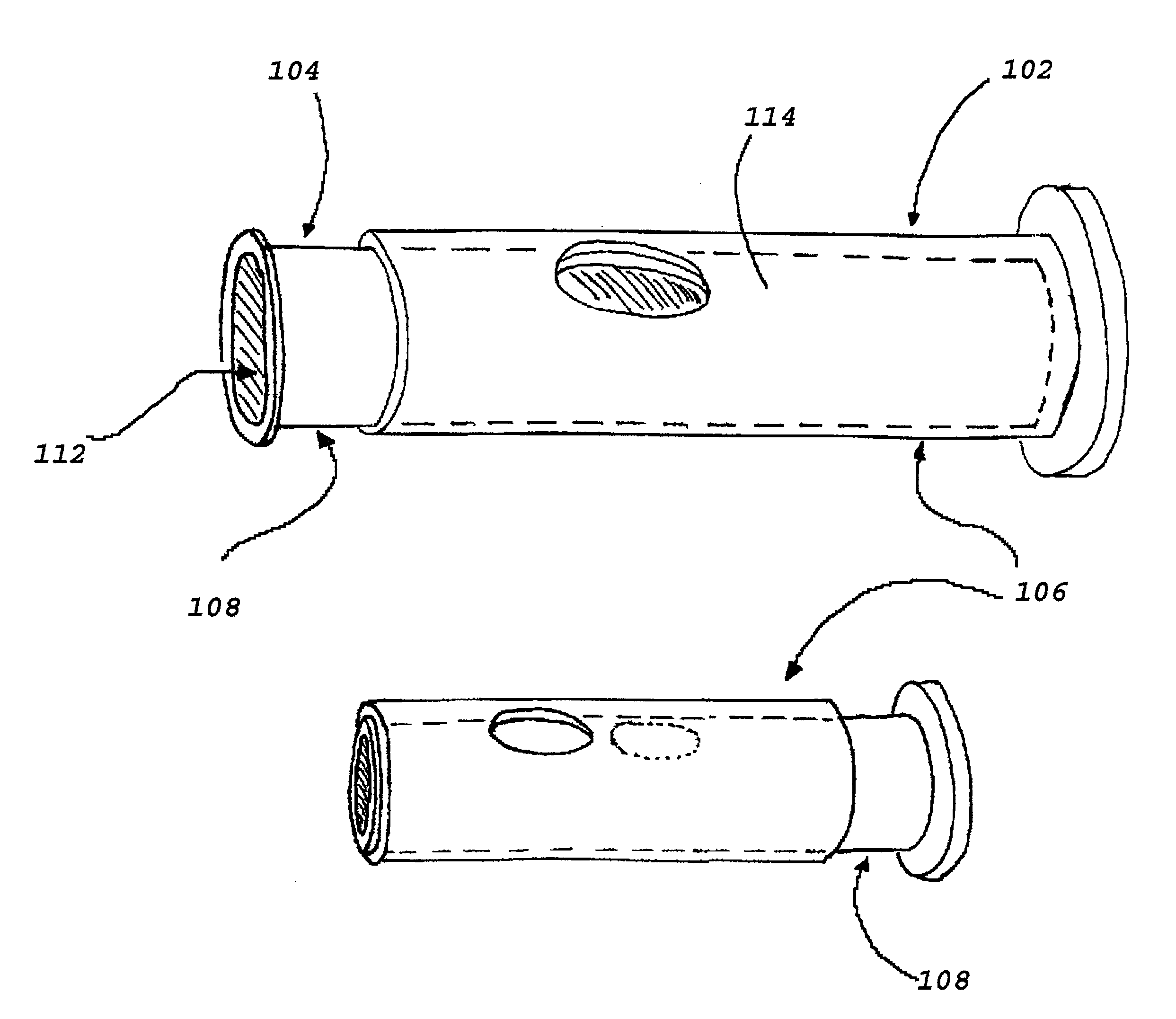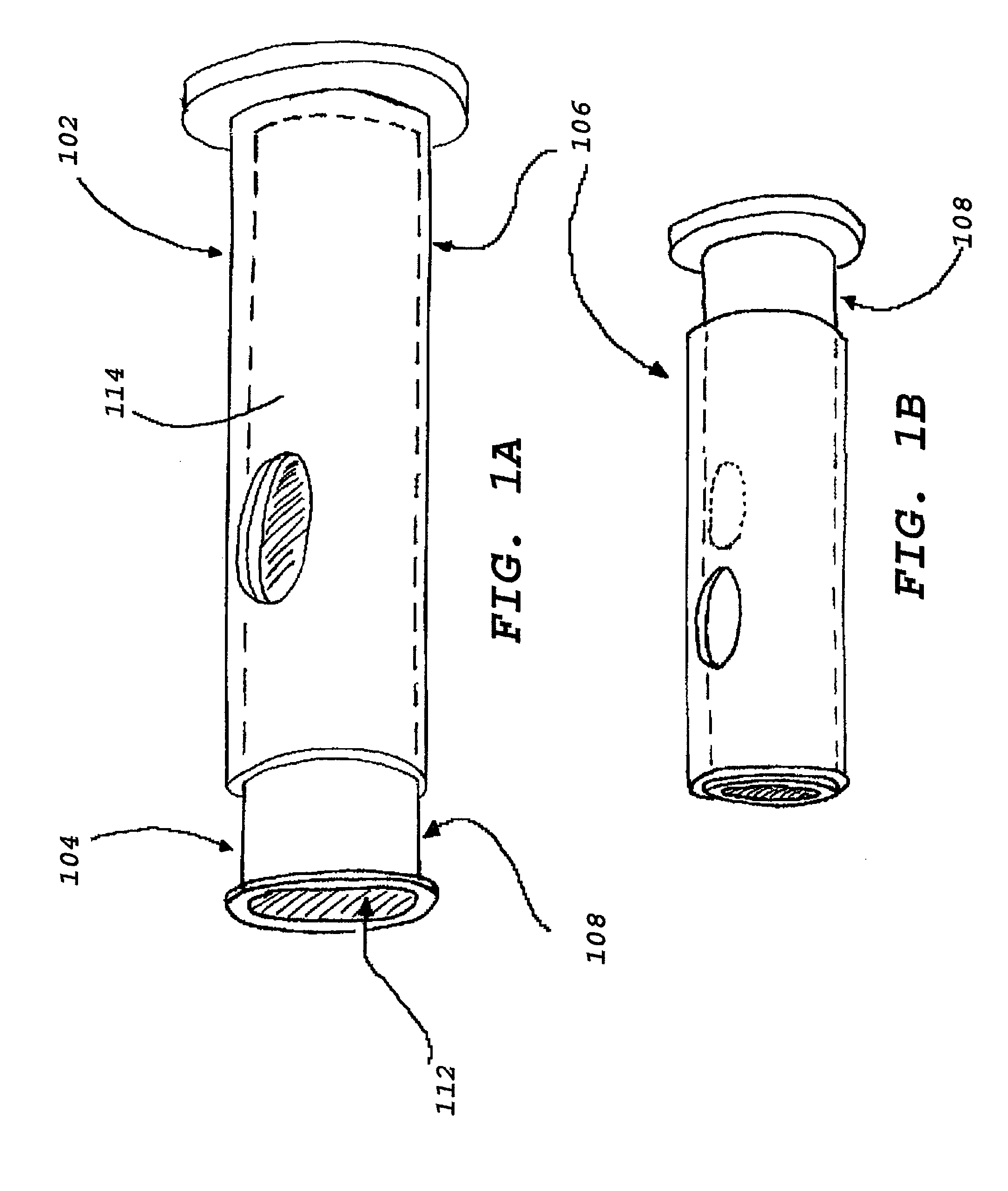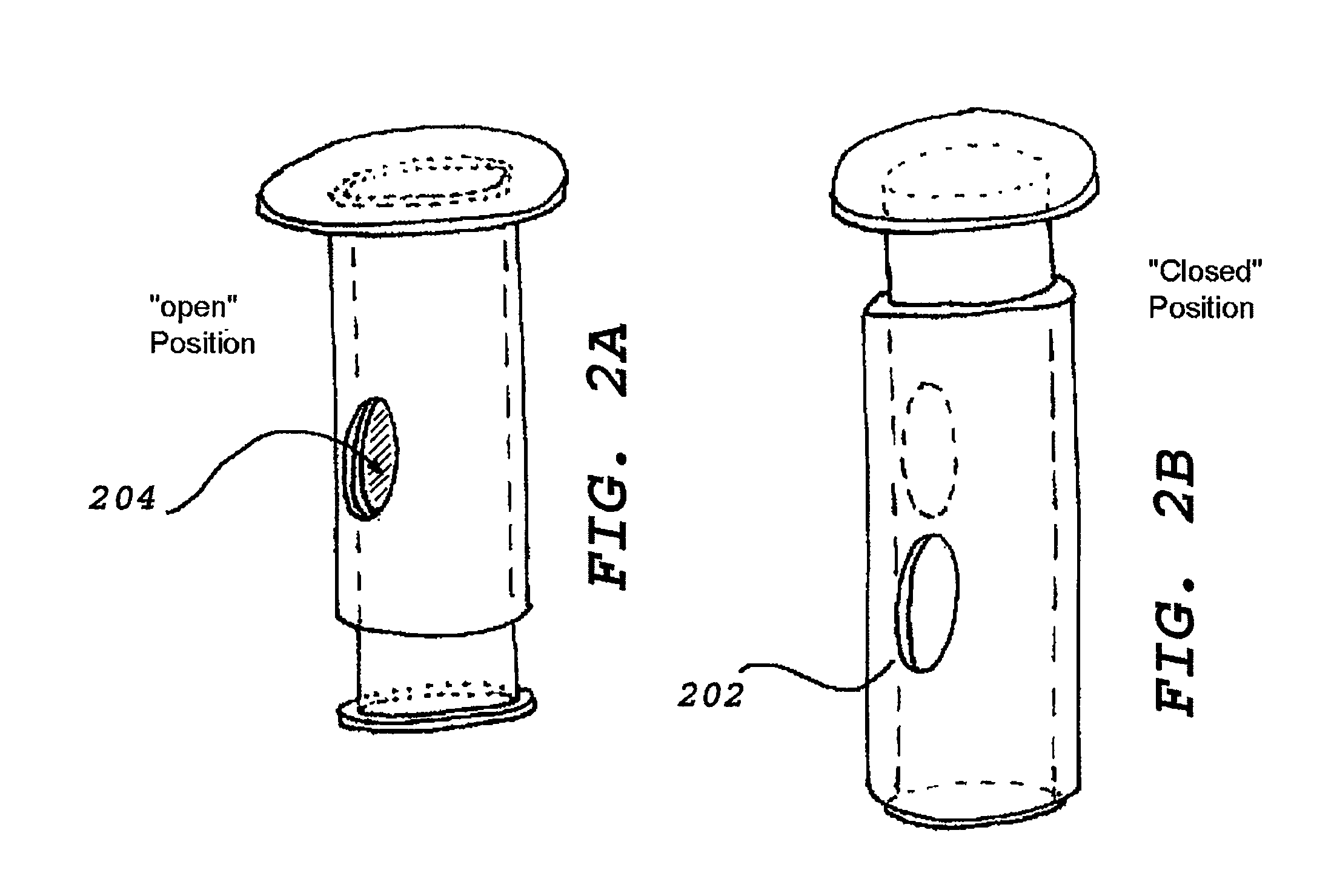Unified octave/register key and vent for musical wind instruments
a technology of octave/register key and vent, which is applied in the direction of wind musical instruments, instruments, musical instruments, etc., can solve the problems of increasing the difficulty of operating additional key mechanisms, increasing the design and manufacture of additional, and many types of woodwind instruments that need more octave/register vents, etc., to facilitate formation, prevent rotation of the core, and promote the alignment of the core opening
- Summary
- Abstract
- Description
- Claims
- Application Information
AI Technical Summary
Benefits of technology
Problems solved by technology
Method used
Image
Examples
example 1
[0069]The octave / register key comprised, according to a non-limiting example, two small segments of tubing, plus a spring (FIG. 8). One tube (the sleeve) was wider in diameter, so that the narrower tube (the core) could fit inside it with just enough tolerance to slide freely back and forth inside the larger tube. A lubricant was applied to the inner surface of the sleeve and / or to the outer surface of the core, to aid in sliding, and to help create an air seal between the moving parts. The sleeve was open on both its ends. The core was closed on one end with a permanently affixed disk or plate that was large enough both to prevent air leakage from one end of the core, and to provide a platform on which the user pressed his / her finger to control the device (this disk is hereinafter referred to as the “button”). For octave / register keys that were affixed to different tone hole keys on an alto saxophone or to the saxophone body, the length of the sleeves was approximately 1.0-3.0 cm, ...
example 2
[0070]The exact lengths and diameters of the core and sleeve segments may be adjusted for various needs and applications such as other locations or positions on the saxophone, or for use on other instruments. For example, an octave / register key as provided herein that is intended for use on a large wind instrument such as a bass saxophone may employ tubing of larger dimensions than an octave / register key that is designed for a relatively very small musical wind instrument such as a soprano saxophone or a soprano saxophone. With a longer, narrower core inside a shorter, wider sleeve, the core may be fashioned so that it slides inside the sleeve until a button affixed to one end of the core bumps into the sleeve during actuation. The other end of the core (that is, the end that is not covered by the button) is open. At that open end, there is a lip, raised edge, or flared end (e.g., a “raised edge”) that is added during the manufacturing process. This raised edge is outside of the sle...
example 3
[0073]On Apr. 11, 2009, the inventor gave a demonstration of a working example of the invention as part of his presentation about woodwind acoustics at the 2009 Region One Conference of the North American Saxophone Alliance, held at the University of Idaho (Moscow, ID). Briefly, a musical performance was rendered on an alto saxophone retrofitted with a plurality of metal octave / register key devices as described herein, having coil springs as actuation-reversal elements, as also described herein, including such devices affixed to tone hole keys and to the body of the saxophone. Facility in achieving upward intervallic leaps of an octave through actuation of the octave / register keys, and in attaining superior intonation of such notes relative to that which could be achieved without actuating the octave / register keys, were noted.
PUM
 Login to View More
Login to View More Abstract
Description
Claims
Application Information
 Login to View More
Login to View More - R&D
- Intellectual Property
- Life Sciences
- Materials
- Tech Scout
- Unparalleled Data Quality
- Higher Quality Content
- 60% Fewer Hallucinations
Browse by: Latest US Patents, China's latest patents, Technical Efficacy Thesaurus, Application Domain, Technology Topic, Popular Technical Reports.
© 2025 PatSnap. All rights reserved.Legal|Privacy policy|Modern Slavery Act Transparency Statement|Sitemap|About US| Contact US: help@patsnap.com



